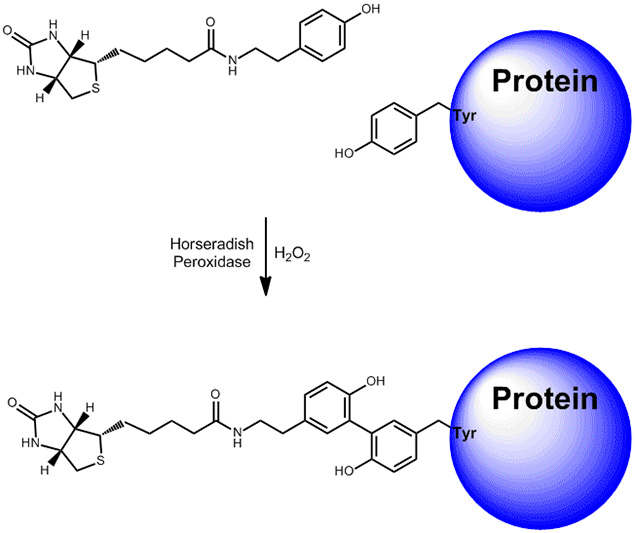Welcome to Iris Biotech
For better service please confirm your country and language we detected.

For better service please confirm your country and language we detected.

Thank you very much for your interest in our products. All prices listed on our website are ex-works, Germany, and may attract customs duties when imported.
You may/will be contacted by the shipping company for additional documentation that may be required by the US Customs for clearance.
We offer you the convenience of buying through a local partner, Peptide Solutions LLC who can import the shipment as well as prepay the customs duties and brokerage on your behalf and provide the convenience of a domestic sale.
Continue to Iris Biotech GmbHSend request to US distributorPublished on 25.03.2014
For long time it is known that tyramine compounds are converted to highly reactive radicals by horseradish peroxidase in presence of H2O2.
In vicinity of proteins, these radicals preferentially react with surface exposed tyrosines. Therefore biotin tyramide is a perfect reagent for protein biotinylation. Numerous applications have been developed and commercialized using this excellent reactivity of biotin tyramide for signal amplification and sensitive detection of very small concentrations.

Biotin tyramide and also a variation with a short PEG spacer in between are available to improve flexibility and solubility.